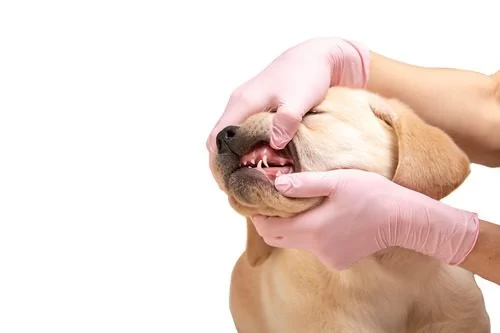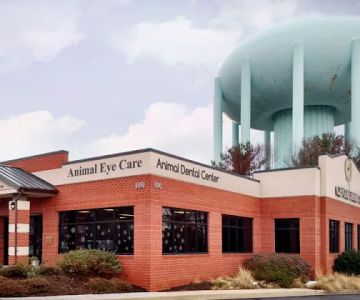Understanding Pet Dental Diseases: Symptoms, Prevention, and Treatments
As a pet owner, you may often find yourself worrying about your furry friend’s overall health. One aspect that tends to get overlooked, but is incredibly important, is your pet’s dental health. Just like humans, pets are susceptible to dental diseases that can lead to serious health issues if left untreated. Over the years, I’ve seen many pets struggle with dental diseases that could have been easily avoided with proper care. In this article, I’ll guide you through the symptoms, causes, and treatments of pet dental diseases and offer practical tips for preventing these common issues.
1. The Common Types of Pet Dental Diseases
Pet dental diseases can range from mild to severe. The most common dental disease that affects both dogs and cats is periodontal disease. Periodontal disease occurs when plaque builds up along the gums, leading to inflammation and infection. If left untreated, it can progress to more serious conditions, such as tooth loss or even damage to internal organs due to bacteria entering the bloodstream. Other dental diseases include:
- Gingivitis: An early stage of gum disease where gums become inflamed and bleed easily.
- Periodontal Disease: Involves damage to the tissue and bone supporting the teeth.
- Tooth Resorption: A condition common in cats where teeth begin to break down from the inside.
- Oral Tumors: Abnormal growths that can be cancerous, affecting your pet’s overall health.
Each of these diseases has distinct symptoms, and understanding them early can help prevent long-term damage to your pet’s teeth and gums.
2. Symptoms of Pet Dental Disease
It’s not always easy to tell when your pet has dental issues, especially if they’re not showing obvious signs of pain. However, there are a few key symptoms that can help you identify dental diseases in your pet:
- Bad Breath: While it’s normal for pets to have a certain smell, a strong, foul odor from your pet’s mouth could indicate an underlying dental problem.
- Red or Swollen Gums: Healthy gums are pink and firm. If your pet’s gums are red, swollen, or bleeding, it’s a sign of infection or gum disease.
- Excessive Drooling: Increased saliva production can be a sign of discomfort or infection in the mouth.
- Difficulty Eating or Chewing: If your pet is hesitant to eat, drops food, or shows signs of pain when chewing, it could be due to a tooth or gum problem.
- Loose or Missing Teeth: Severe periodontal disease can cause teeth to loosen or fall out entirely.
- Behavioral Changes: Pets in pain may become more irritable, less active, or avoid being touched around their mouth.
If you notice any of these symptoms in your pet, it’s important to seek veterinary attention as soon as possible to prevent the disease from worsening.
3. How to Prevent Dental Diseases in Pets
Prevention is always better than cure, and maintaining your pet’s oral hygiene can greatly reduce the chances of dental diseases developing. Here are some simple yet effective tips that I personally follow to keep my pets’ teeth healthy:
- Brushing Your Pet’s Teeth: Just like humans, regular brushing is one of the best ways to prevent plaque buildup. Invest in a pet-specific toothbrush and toothpaste. Aim to brush your pet’s teeth at least 2-3 times a week, but daily brushing is ideal.
- Dental Chews and Toys: Dental chews and toys designed to clean teeth can be a fun way for your pet to maintain their oral health. These help reduce plaque and tartar buildup while satisfying your pet’s chewing instincts.
- Regular Veterinary Checkups: Make sure your pet’s teeth are checked during routine veterinary visits. Your vet can spot early signs of dental disease and provide professional cleanings when necessary.
- Healthy Diet: A nutritious, well-balanced diet plays a significant role in your pet’s overall health, including their teeth. Dry food, in particular, can help scrape away plaque, but always make sure your pet’s food is suited to their specific needs.
- Water Additives: Some pet owners find that adding dental water additives to their pet’s drinking water helps reduce plaque and bad breath. Check with your vet for recommendations.
By following these simple steps, you can help your pet maintain healthy teeth and gums and reduce the risk of costly dental treatments down the line.
4. Treatment Options for Pet Dental Diseases
If your pet has already developed dental disease, don’t panic—there are plenty of treatment options available. The treatment your vet recommends will depend on the severity of the disease:
- Professional Teeth Cleaning: For pets with significant plaque buildup or gum disease, a professional cleaning under anesthesia is often required. This allows the vet to thoroughly clean your pet’s teeth and gums, addressing any infection or damage.
- Extractions: In severe cases where a tooth is damaged beyond repair, extraction may be necessary to prevent further infection.
- Medications: Your vet may prescribe antibiotics or pain relief medications to manage infection or inflammation.
- Oral Surgery: In rare cases, especially with oral tumors or severe periodontal disease, surgery may be required to treat the condition.
It’s crucial to follow your vet’s instructions carefully after treatment to ensure your pet’s recovery is as smooth as possible. Your vet may recommend special diets or additional at-home care to maintain your pet’s oral health.
5. Real-Life Story: A Wake-Up Call for Pet Dental Care
Last year, a close friend of mine shared a concerning experience with their dog, Max, a Golden Retriever. Max had always been a cheerful and energetic dog, but recently, he seemed to be having trouble eating. His owners noticed a foul smell coming from his mouth, and he was reluctant to chew on his favorite toys. After a visit to the vet, Max was diagnosed with severe periodontal disease, and unfortunately, he had to undergo several extractions. It was a costly and painful experience for both Max and his owners. The vet explained that with better dental care, this could have been avoided.
This story reminded me how important it is to stay on top of your pet’s dental health. It’s not just about keeping their teeth clean; it’s about preventing unnecessary pain and costly treatments. Early intervention and regular care can make all the difference.
In conclusion, maintaining your pet’s dental health should be a top priority. It’s not just about a clean smile—poor oral hygiene can lead to serious health issues that affect your pet’s overall well-being. By being proactive about their dental care, you can help your pet live a longer, healthier life.












